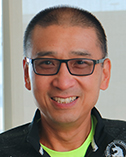
Yifan Cheng
University of California, San Francisco
|
Primary Section: 29, Biophysics and Computational Biology Secondary Section: 21, Biochemistry Membership Type:
Member
(elected 2020)
|
Biosketch
Yifan Cheng is a biophysicist and structural biologist. He was born and grew up in China, where he entered college in 1978 after the ending of “culture revolution”. During his undergraduate, he studied solid state physics at Wuhan University. In 1991, he received his Ph.D. degree in physics from Institute of Physics, Chinese Academy of Sciences. He continued his research in solid state physics and electron microscopy for five years as a postdoctoral fellow at the University of Oslo (NTNF Fellow), and Max-Planck-Institute of Metal Research (Alexander von Humboldt Fellow). In 1996, he changed his research direction to structural biology, and received further training in cryo-electron microscopy (cryo-EM) from Professors Kenneth Taylor at Florida State University and Yoshinori Fujiyoshi at Kyoto University. In 1999, he joined the laboratory of Thomas Walz to setup a cryo-EM operation at Harvard Medical School. He joined the faculty of University of California San Francisco in 2006 and has stayed there ever since. Pioneering works of his laboratory in cryo-EM methodology and membrane proteins structural biology facilitated the “resolution revolution” of single particle cryo-EM. He has been an HHMI Investigator since 2015. He is also the recipient of the Christian B. Anfinsen Award from The Protein Society (2018). He became a member of the American Academy of Arts and Science in 2019 and a member of the National Academy of Sciences in 2020.
Research Interests
Yifan Cheng’s laboratory uses cryo-electron microscopy (cryo-EM) to study structures of biological macromolecules, particularly integral membrane proteins and dynamic complexes. In addition, development of cryo-EM methodology for structural biology is also a long-lasting interest of his laboratory. Areas of previous works include development of algorithms to correct electron beam-induced blurring of cryo-EM images, improving quality and throughput of cryo-EM data acquisitions, structure determinations of TRP channels, and dynamic behavior of channel gating by endogenous and exogeneous physical and chemical stimuli, etc.

